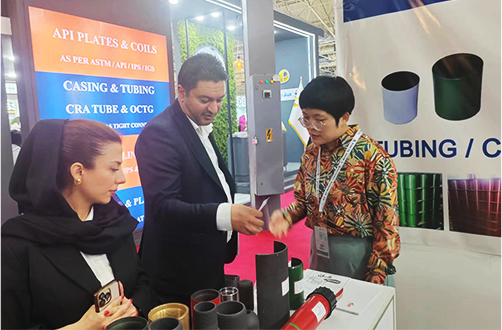- Afrikaans
- Albanian
- Amharic
- Arabic
- Armenian
- Azerbaijani
- Basque
- Belarusian
- Bengali
- Bosnian
- Bulgarian
- Catalan
- Cebuano
- Corsican
- Croatian
- Czech
- Danish
- Dutch
- English
- Esperanto
- Estonian
- Finnish
- French
- Frisian
- Galician
- Georgian
- German
- Greek
- Gujarati
- Haitian Creole
- hausa
- hawaiian
- Hebrew
- Hindi
- Miao
- Hungarian
- Icelandic
- igbo
- Indonesian
- irish
- Italian
- Japanese
- Javanese
- Kannada
- kazakh
- Khmer
- Rwandese
- Korean
- Kurdish
- Kyrgyz
- Lao
- Latin
- Latvian
- Lithuanian
- Luxembourgish
- Macedonian
- Malgashi
- Malay
- Malayalam
- Maltese
- Maori
- Marathi
- Mongolian
- Myanmar
- Nepali
- Norwegian
- Norwegian
- Occitan
- Pashto
- Persian
- Polish
- Portuguese
- Punjabi
- Romanian
- Russian
- Samoan
- Scottish Gaelic
- Serbian
- Sesotho
- Shona
- Sindhi
- Sinhala
- Slovak
- Slovenian
- Somali
- Spanish
- Sundanese
- Swahili
- Swedish
- Tagalog
- Tajik
- Tamil
- Tatar
- Telugu
- Thai
- Turkish
- Turkmen
- Ukrainian
- Urdu
- Uighur
- Uzbek
- Vietnamese
- Welsh
- Bantu
- Yiddish
- Yoruba
- Zulu
Understanding the Role of Seating Nipple in Tubing Systems for Enhanced Performance
Understanding the Importance of Seating Nipple in Tubing
In the oil and gas industry, the proper management of tubing systems is crucial for ensuring efficient production and the safety of operations. One critical component of these systems is the seating nipple, a device designed to facilitate the connection between tubing strings and various downhole tools. This article explores the significance of seating nipples, their types, installation, and their role in the overall performance of tubing systems.
What is a Seating Nipple?
A seating nipple, often referred to as a nipple in industrial contexts, is an essential component used in tubing to provide a secure anchor point for tools that are lowered into the well. Designed to accommodate a variety of downhole devices, such as plugs, packers, and other auxiliary equipment, seating nipples are engineered to withstand extreme conditions including high pressure, temperature fluctuations, and corrosive substances.
Types of Seating Nipples
Seating nipples come in various types, each tailored to meet specific operational needs. The most common types include
1. Standard Seating Nipples These are traditional designs used to facilitate the seating of plugs or other tools. They typically have a defined profile allowing for easy insertion and removal.
2. Screw-In Nipples These nipples are threaded into the tubing string and offer a more robust seal, making them ideal for high-pressure applications.
4. Retrievable Nipples Designed for easy retrieval, these nipples allow operators to remove downhole tools without the need for significant rigging or additional equipment.
seating nipple in tubing

Each type serves a particular purpose and is selected based on the operational requirements of the well and the tools being used.
Installation of Seating Nipples
The installation of seating nipples is a critical step that requires attention to detail to ensure optimal performance. Proper preparation begins with thorough inspection of the nipple and tubing for any signs of wear or damage. Correct alignment during installation is crucial to prevent misalignment issues, which could lead to equipment failure down the line. Once in place, the seating nipple must be secured correctly to maintain the integrity of the tubing system.
Operators should also consider the specifications provided by the manufacturers regarding torque settings and installation procedures. Following these guidelines helps minimize the risk of leakage and ensures that the nipple functions correctly throughout its operational lifetime.
The Role of Seating Nipples in Tubing Performance
Seating nipples play a vital role in the overall performance of tubing systems. They are designed not just to support downhole tools, but also to provide a mechanism for controlling fluid flow during various stages of production, testing, and maintenance.
Maintaining well control is one of the primary functions of seating nipples. These devices allow operators to isolate different sections of the well, enabling them to perform repairs and interventions without compromising the entire system. This isolation is essential, especially in scenarios where one section may require maintenance while production continues in others.
Moreover, the presence of reliable seating nipples enhances the safety of operations. By ensuring that tools are securely seated in the tubing, the risk of tool failure is minimized, thereby reducing the chances of accidents caused by unexpected equipment malfunctions.
Conclusion
In conclusion, seating nipples are integral components of tubing systems in the oil and gas industry, serving a dual purpose of facilitating the connection of downhole tools and maintaining well control. Understanding the various types, proper installation techniques, and their critical role in fluid management can help operators maximize production efficiency while ensuring safety. As technology continues to advance, the design and functionality of seating nipples will likely evolve, further enhancing their importance in modern drilling operations.
-
Tubing Pup Joints: Essential Components for Oil and Gas OperationsNewsJul.10,2025
-
Pup Joints: Essential Components for Reliable Drilling OperationsNewsJul.10,2025
-
Pipe Couplings: Connecting Your World EfficientlyNewsJul.10,2025
-
Mastering Oilfield Operations with Quality Tubing and CasingNewsJul.10,2025
-
High-Quality Casing Couplings for Every NeedNewsJul.10,2025
-
Boost Your Drilling Efficiency with Premium Crossover Tools & Seating NipplesNewsJul.10,2025







